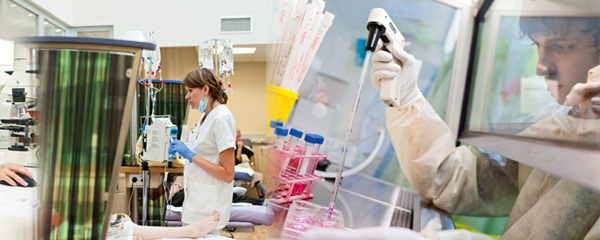Advances made in fundamental research on cancer have led to the development of new drugs to fight it, that is to say targeted therapies. Contrary to classical “cytotoxic” anticancer drugs that destroy cells that divide rapidly (such as cancer cells, but healthy cells, too), targeted therapies combat mechanisms (genes, proteins, receivers, etc.) specific to the development of cancer cells.
For example, they attack the growth factors required for the cancer to produce its own blood vessels (angiogenesis inhibitors) or to develop (anti-EGF), block an intracellular multiplication mechanism in cancer cells (tyrosine kinase inhibitors), or target a protein overexpressed by the malignant cell at its surface (anti-HER-1).
For further information:
Therapeutic targeting: interview with Prof. Gilles Salles
Personalised medicine: interview with Prof. Véronique Trillet-Lenoir

